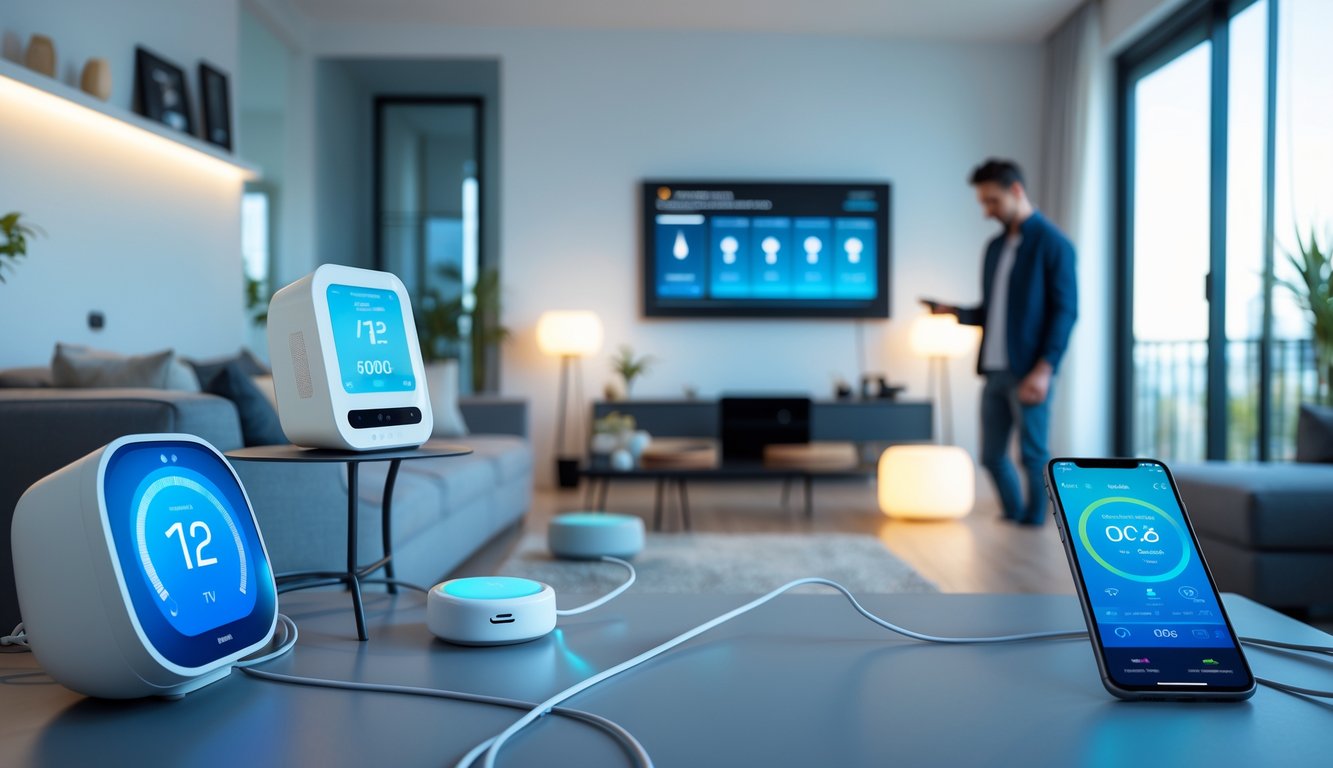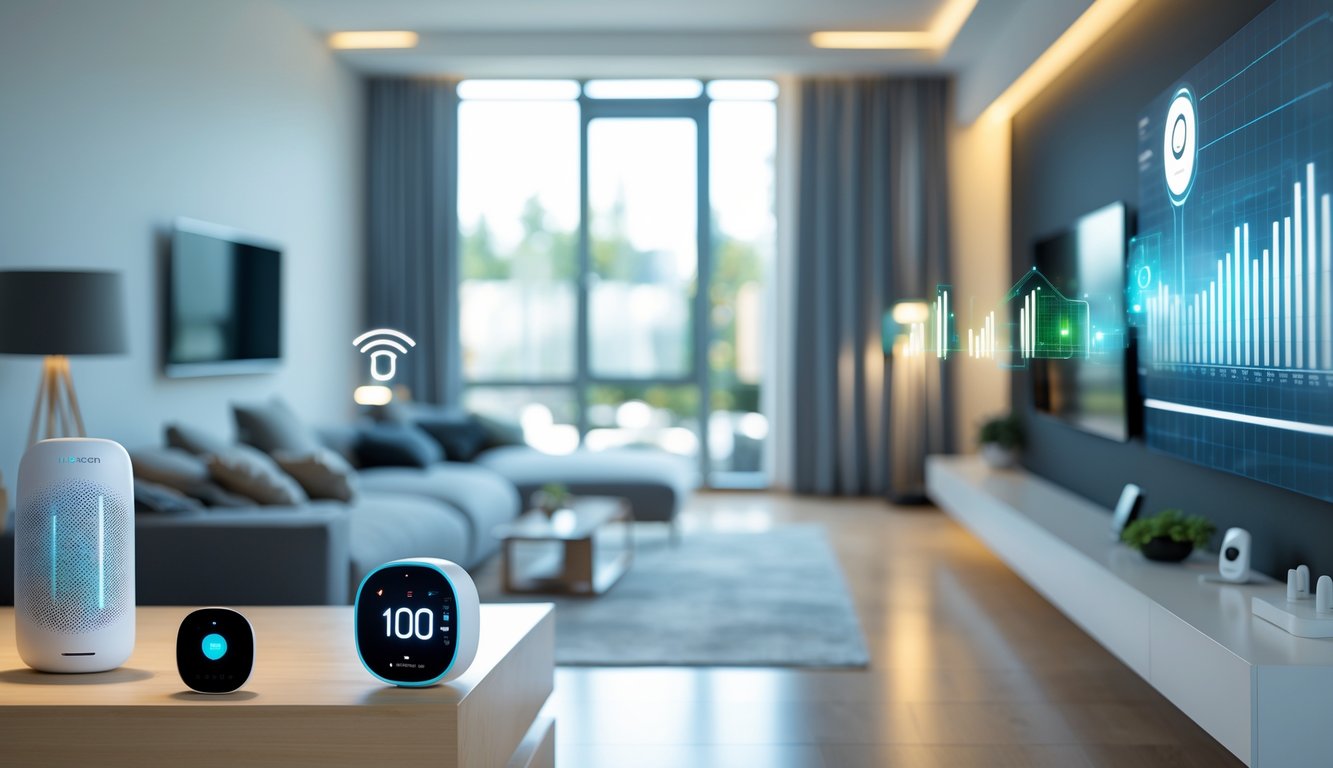
Top Smart Home Devices Responsible for High Energy Use

I never cared about phantom loads until my bill shot up after I bought the “efficient” gadgets. More screens, more smart stuff, more headaches. This isn’t just in my head. “Low-power” electronics end up pulling juice all day—sometimes even when “off”—and all those app notifications aren’t worth the cash.
Smart TVs and Home Entertainment Systems
Streaming apps, consoles humming in standby, Smart TVs running silent updates—every LED glowing away. An LG OLED uses about 0.5W “off,” but 120W+ when on, and who unplugs the TV after every movie? Roku, Fire TV, Apple TV—all those boxes sip power nonstop.
“Eco mode” barely dents it when the system auto-downloads updates or displays “ambient” art. My desktop computer sits unused, drawing 30W–60W. Add a satellite box (14W standby, thanks Lawrence Berkeley Lab), and you’re pushing 100W all day, every day. Smart entertainment gear drains more energy than you think.
Nobody talks about how a weekend binge-watching session turns into a $10–$20 monthly hit, mostly wasted when nobody’s even in the room.
Smart Plugs and Power Strips
Whoever decided “smart plug” meant “energy saver” clearly never checked the numbers. Plug in a cheap Wi-Fi plug—sure, you can turn off a lamp with your phone, but that plug itself eats 1–2W all the time, even empty. Try a bunch of “smart” strips in your workshop—“works with Alexa,” “IFTTT ready”—every one leaks current.
Supposed to help spot energy hogs, but the background power use adds up. I tried an Emporia Vue—tracked my freezer and computer, but the sensor and hub themselves used 2.8W, measured with a Kill-A-Watt. Smart home efficiency guides claim remote switching saves watts, but phantom loads sneak right back.
The only real “off” is yanking the plug. “Standby” just means “still costing you money.”
Kitchen Appliances and Gadgets
Why am I in front of the fridge at midnight again? Oh right, because apparently I need a Wi-Fi screen to tell me how cold my leftovers are. Who at Whirlpool thought “smart” meant “let’s make everything hungrier for power and attention”? My kitchen’s a graveyard of air fryers, “touchscreen” microwaves, and coffee makers that want to talk to Alexa, all buzzing and blinking and eating crumbs and electricity.
I skimmed some energy audit (or maybe doomscrolled Reddit, can’t remember) and apparently my refrigerator’s “smart” display burns an extra 5–10 kWh a month. That’s more than my phone charger, which honestly feels like a scam. Smart slow cookers, BLE coffee pots, pressure cookers that want my Wi-Fi password: half the time, the app just freezes, but the gadgets? They’re always awake, waiting for me to ask them to do something I could’ve done in two seconds.
Honestly, it’s kind of nuts. My friend (he’s a gadget addict, bless him) has this “smart” toaster oven that sips 1.6W on standby, all year, so he can preheat it from his phone once a month. Supposedly energy-efficient kitchen stuff keeps getting “smarter,” but my bill just gets fatter and the break-even point is always a mirage—right before the next upgrade. Why does every gadget now need a scheduler or a nightlight mode? Most of my “usage” is just leaving things plugged in because I’m lazy.
The Real Reason Your Smart Home Devices Drain More Energy
There’s something super weird about watching the kitchen glow with little blue LEDs, knowing these “energy-saving” devices probably suck up more power than my old lava lamp ever did. I mean, who’s actually saving 30% on their bill? Not me. My “eco” plugs and cameras just keep inching the numbers up.
Always-On Connectivity
Why is my router always warm? It never sleeps. Smart bulbs, doorbells, voice assistants—every one of them is on high alert, all the time, just in case I want to yell at them. That “ready” state? It means they’re sipping electricity, 24/7.
Even when I unplug the old stereo, the smart thermostat just keeps humming away, checking humidity, looking for updates, pinging my phone’s location. According to these experts, always-on stuff adds a baseline to your bill that’s just… always there. Not a huge spike, but it never stops. And standby mode? Don’t get me started. I’m paying for these things to be “ready,” not just for when I actually use them.
And why does my smart speaker need to check the weather at 3am? It’s like having a cat that wants attention, except it runs on kilowatt-hours.
Background Processes and Updates
Firmware updates. Why did no one warn me my living room lamp would want more software patches than my laptop? These updates chew through power because they run whenever they feel like it, not just when I’m awake. The camera pings for an update, wakes the hub, wakes the other gadgets—like a digital chain reaction.
Guides say these updates barely use any energy, but when every device does it on a different night? It adds up. Energy profiling says the “overhead” is higher than you’d guess. Last night, my smart plug got three security patches. Three! Couldn’t they just bundle them? Nope. Each cycle keeps the wireless chip running, processor spinning, sensors polling. That one line from the home energy engineer—“it’s not how often you use it, it’s that it’s always using something”—yeah, that’s exactly it.
And sometimes the updates fail, so the gadget just loops, burning power for nothing. Nobody brags about this in the ads, but it’s exactly why my bill creeps up with every “upgrade.”